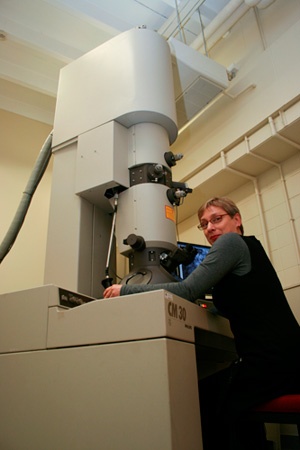Jul 13 2009
Novellus Systems (NASDAQ:NVLS) announced today that it has developed an advanced Hollow Cathode Magnetron (HCM) IONX(TM) PVD copper seed process that will enable copper interconnects below the 2xnm technology node. The breakthrough will allow the company's highly-productive and proven HCM PVD technology on the INOVA platform to continue to be used for barrier and seed thin film deposition, avoiding the migration to less-productive and costly ALD or CVD approaches.

For the past ten years, PVD copper barrier/seed and copper electrochemical deposition have been the dominant technologies used in building logic devices. Memory manufacturers are now transitioning to copper interconnects as well, for reasons driven by technology and cost. In terms of technology, the lower RC interconnect delay gained when using copper equates to higher speed memory chips. From the cost perspective, copper DRAM and Flash devices are more manufacturable than their aluminum counterparts since the copper damascene process flow requires fewer production steps and utilizes deposition equipment with higher throughputs.
As the critical dimensions (CD) of via and trench structures decrease with advanced technology nodes, PVD deposition technology becomes limited by its lack of conformality. Copper seed requirements generally call for at least 100 Angstroms of film thickness in the field to minimize the electroplating terminal effect, as well as >20 Angstroms of continuous film within the structure to ensure void-free copper fill. With 2xnm devices already limiting the top CD to approximately 220 Angstroms, obtaining sufficient step coverage using conventional and even ionized PVD copper seed will be a challenge. Excessive overhang at the top of the feature will lead to a reduction in the size of the opening, also known as "pinch-off,". This constriction in the copper seed layer leads to insufficient copper fill of these extremely small structures, resulting in voiding and poor device reliability. Extending PVD copper seed to 2xnm nodes and beyond requires a new approach that is not constrained by typical step coverage performance.
Working with leading logic and memory customers, Novellus has developed innovative plasma confinement and focusing magnetics for the INOVA HCM sputtering source that enable simultaneous control of PVD overhang, step coverage, and bottom-up fill. By matching the proper balance of ion density and ion energy, Novellus' advanced copper seed process operates in a regime that results in bottom-up feature fill versus conformal deposition. This advanced copper seed approach reduces the pre-plating aspect ratio and increases the process window for subsequent void-free copper fill. Alternative ALD or CVD seed and adhesion layer technologies, such as cobalt, increase this pre-plating copper fill aspect ratio and the propensity for micro-voiding. Adding adhesion layers into the barrier-seed stack also results in an increase in line resistance, negatively impacting device speed.
"This latest innovation in HCM technology will extend PVD copper seed to the 22nm node and beyond," said Dr. Wai-Fan Yau, general manager for Novellus' Integrated Metals Business Unit. "Our advanced copper seed offers the ability to fill ultra-small features, resulting in increased device reliability, without having to introduce more complicated and costly CVD or ALD processes into the manufacturing sequence."